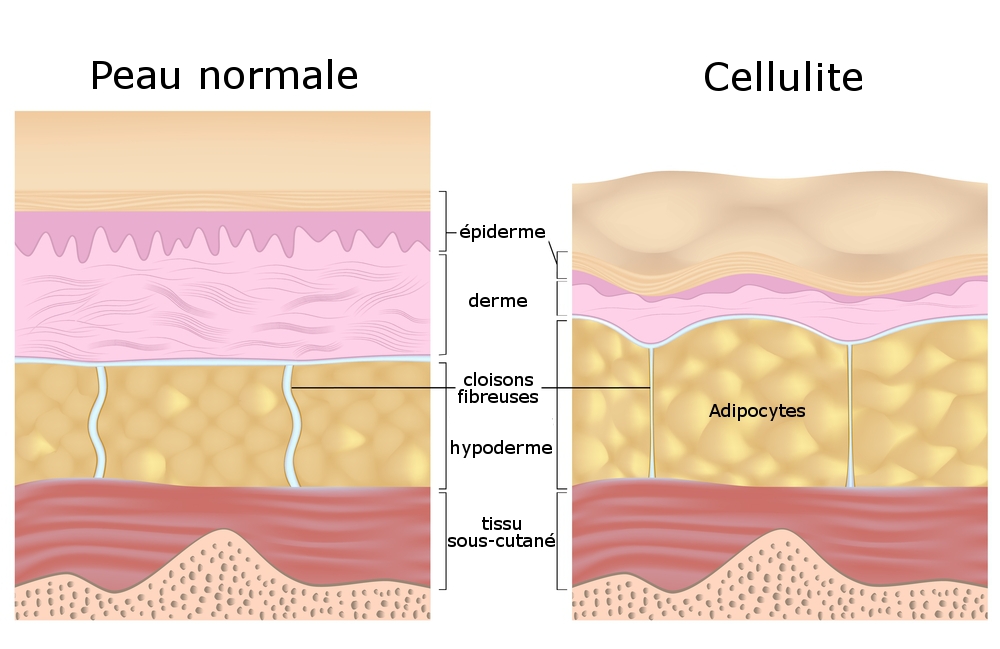What is commonly referred to as cellulite is actually lipodystrophy. It is therefore a fat cluster characterized by its gynoid location (that is, subumbilical in women), its installation at puberty and its recrudescence after pregnancy and menopause. This is a major aesthetic problem in women, a source of reason for frequent consultation that the doctor must take into account with the evolution of current therapies that have become effective.
Anatomically and etiologically: This lipodystrophy is located on the buttocks, the thighs, the inner side of the knees and ankles, the abdomen (android morphology in men), the nape and the arms. Multiple factors are at the origin of this dysfunction and they associate with each other to varying degrees. They are genetic, hormonal, vascular, neurological and nutritional. In the latter case if the energy balance is not quantitatively balanced, excess dietary intake would lead to fat storage in fat cells (fat cells).
Histologically and physiologically: This lipodystrophy is a cluster of fat cells: the adipocytes located at the level of the hypodermis (the deepest layer of the skin), are requisitioned by the body to store the fats. This storage has an essential role in the survival of the female species because in case of major energy need (pregnancy, high low calorie diet, undernutrition, famine), fat of the adipocytes will be mobilized to cover these needs. These cells are grouped into lobules. By increasing in volume, the fatty lobules exert pressure on the upper layers of the skin (dermis and epidermis) to give it a capiton appearance or “orange skin”. This aspect is aggravated by the water retention that infiltrates between the fat lobules preventing their proper vascularization.

